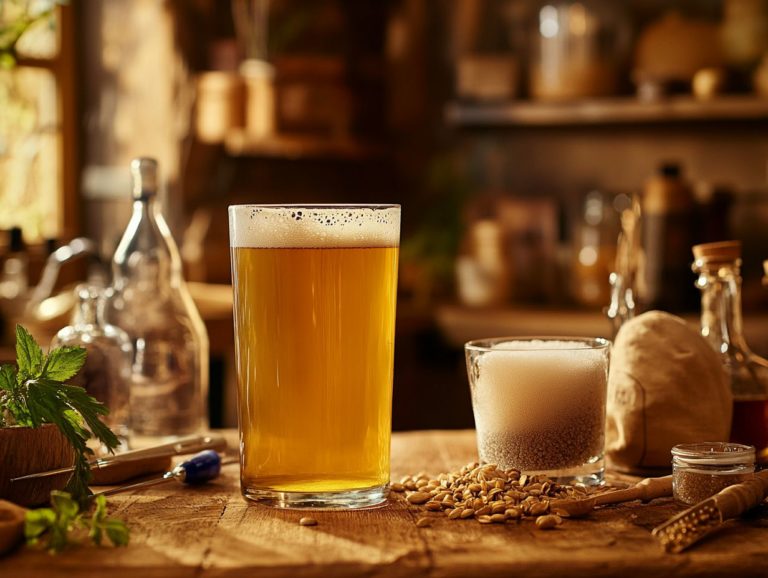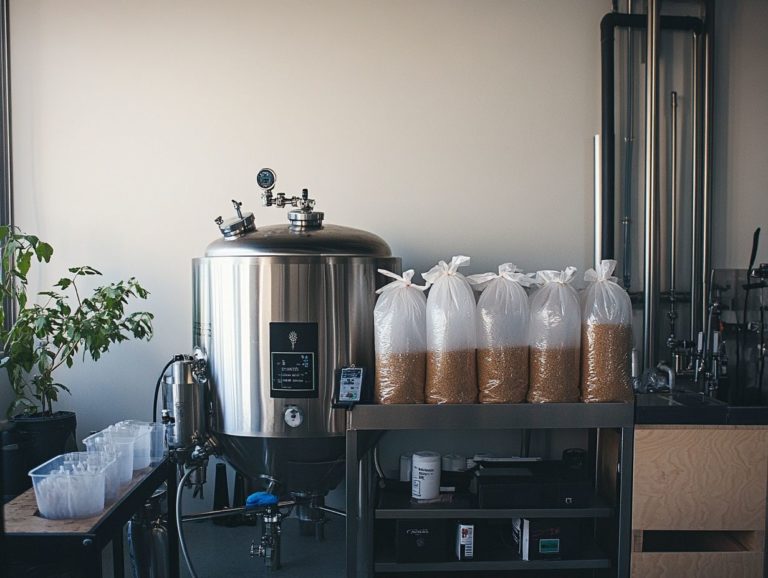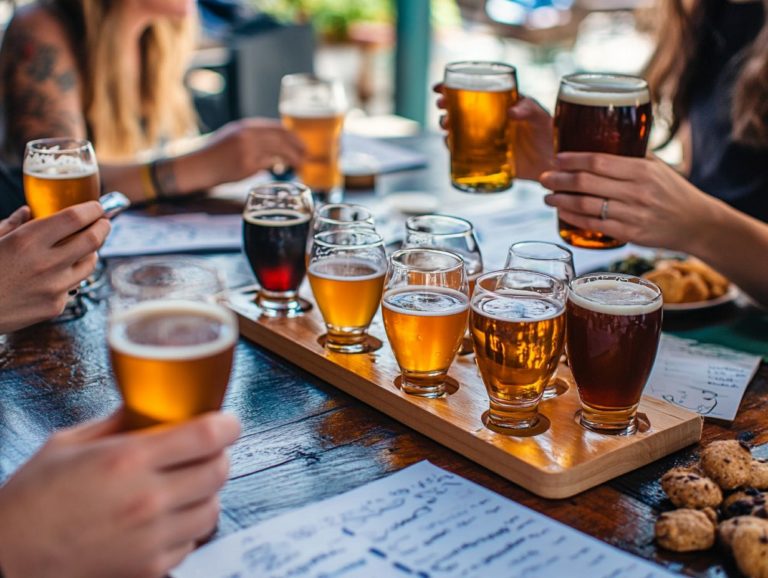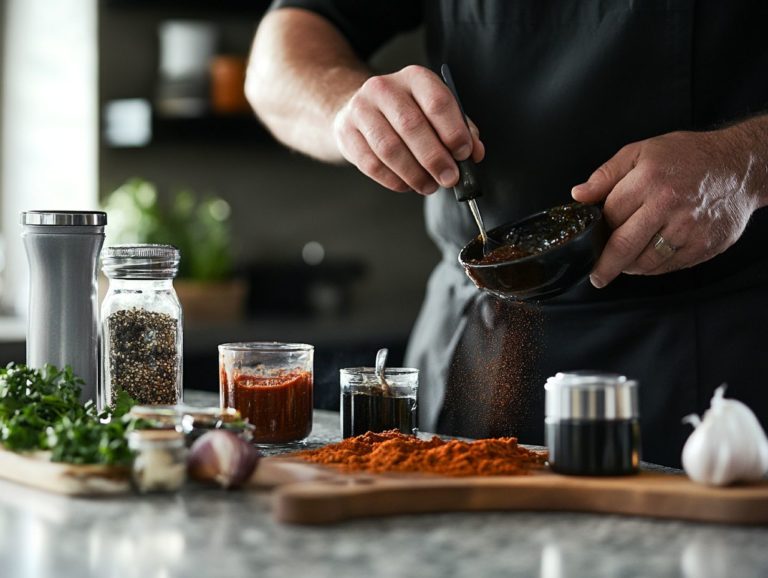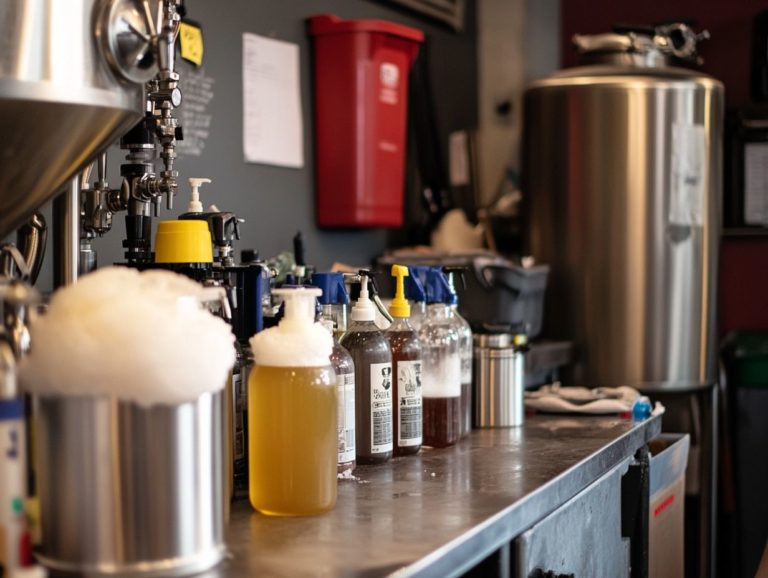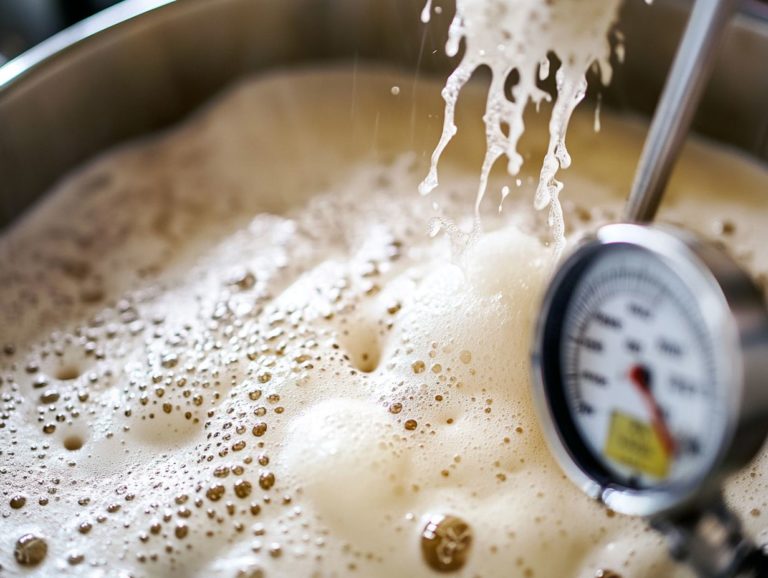How to Solve High Carbonation Problems
High carbonation can pose a significant challenge for you as a brewer, often resulting in excessive foam, off-flavors, and pouring difficulties that can be quite frustrating. This can be particularly problematic when dealing with beverages like soda or sparkling water.
Understanding the causes, symptoms, and solutions of high carbonation is crucial for achieving that perfect brew. This guide delves into what high carbonation is and the common factors that contribute to it.
You’ll also find practical prevention strategies and effective fixes to help you maintain the ideal carbonation level in your beverages. Whether you re an experienced brewer or a curious enthusiast, this guide equips you to tackle high carbonation issues confidently!
Contents
- Key Takeaways:
- What is High Carbonation?
- What Causes High Carbonation?
- 1. Overcarbonation During Fermentation
- 2. Incorrect CO2 Pressure Settings
- What are the Symptoms of High Carbonation?
- 2. Difficulty Pouring or Dispensing
- 3. Off-Flavors or Sour Taste
- How to Prevent High Carbonation?
- 1. Proper Sanitation and Cleaning Practices
- How to Fix High Carbonation or Over-carbonation?
- Adjust CO2 Pressure and Temperature
- Use of Anti-foaming Agents
- Frequently Asked Questions
- What causes high carbonation problems in drinks?
- How can I tell if my drink has high carbonation?
- What are the effects of high carbonation on drinks?
- How can I adjust the carbonation levels in my drink?
- How do I fix high carbonation problems in my drinks?
- How can I prevent high carbonation problems in the future?
Key Takeaways:
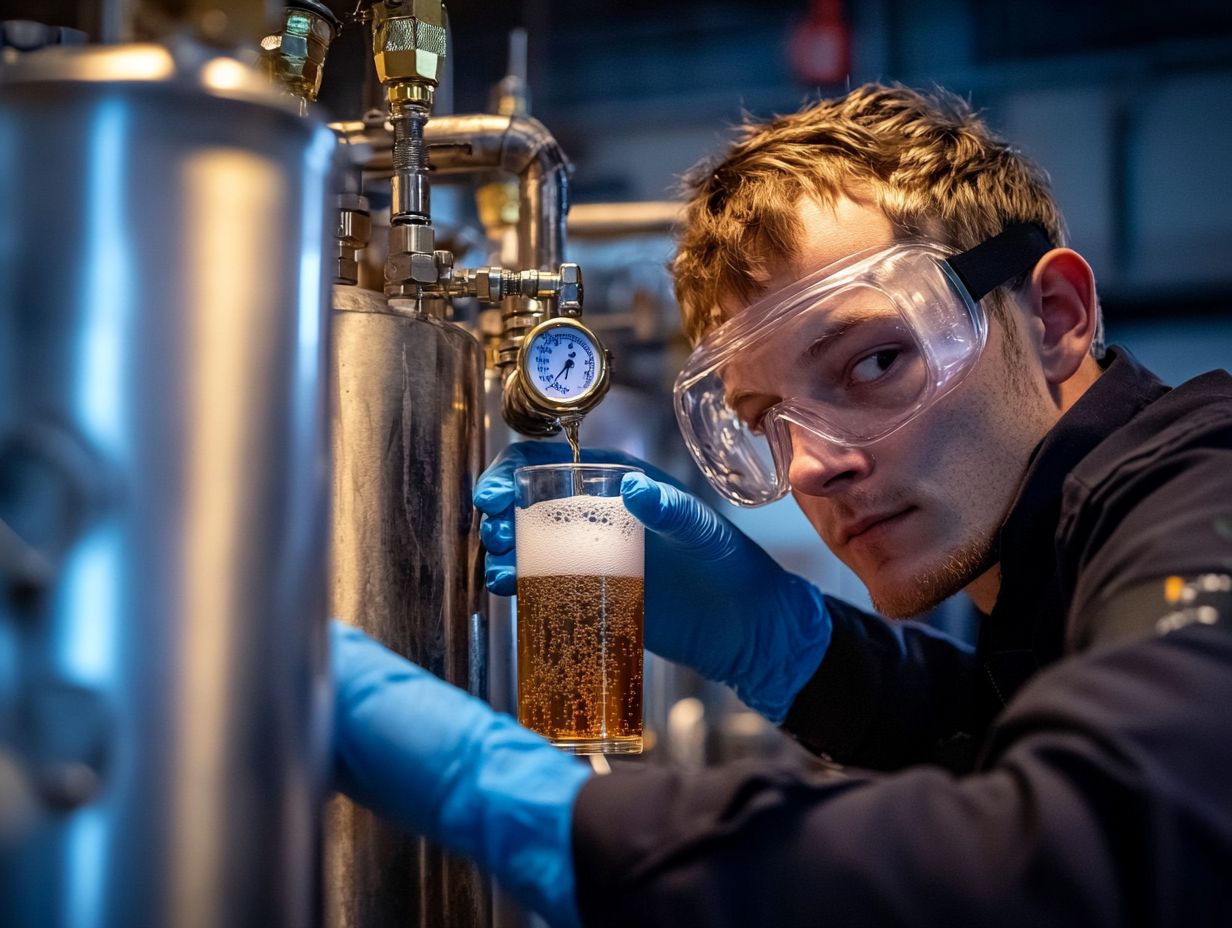
- High carbonation in beer can lead to excessive foam, difficult pouring, and off-flavors.
- Overcarbonation during fermentation, incorrect CO2 pressure settings, and contamination with wild yeast or bacteria are common causes of high carbonation. Issues with your keg setup or conditioning methods can also contribute significantly.
- To prevent high carbonation, proper sanitation, accurate CO2 pressure settings, and appropriate yeast strains should be used. Fixing high carbonation may involve bleeding off excess CO2, adjusting pressure and temperature, and using anti-foaming agents.
What is High Carbonation?
High carbonation pertains to the heightened levels of carbon dioxide dissolved in beverages, a characteristic commonly associated with soda, sparkling water, and beer. This process enriches the sensory experience, adding to the effervescence and mouthfeel that many discerning consumers appreciate.
Striking the right carbonation level is essential for a variety of beverages, as it significantly impacts taste and overall enjoyment. However, over-carbonation can result in undesirable outcomes, such as excessive foaming and off-flavors, making it a critical consideration in the brewing process particularly for styles like New England IPA and other craft beers.
What Causes High Carbonation?
High carbonation in beverages can be linked to several key factors, most notably the fermentation process. During this stage, yeast converts sugars into alcohol and carbon dioxide, generating carbon dioxide (CO2) as a byproduct. This natural occurrence plays a vital role in brewing beer, with the choice of yeast and sugar types, including options like dextrose and carbonation drops, significantly impacting the carbonation levels achieved.
If CO2 pressure settings are not properly calibrated during kegging or bottling, it can lead to over-carbonation, ultimately resulting in less-than-desirable sensory characteristics in the finished product. Improper use of your CO2 tank or keg lines can exacerbate this issue.
1. Overcarbonation During Fermentation
Overcarbonation during fermentation happens when your yeast goes on a sugar binge, churning out more carbon dioxide than you bargained for. The result? A beverage that s fizzing like it just popped out of a soda bottle. This issue often crops up when priming sugar isn t measured with precision, leading to fermentation results that can be as unpredictable as the weather.
Northern Brewer and Brewer s Best both offer reliable priming sugars to help prevent this issue.
The gravity of your brew is crucial in determining the appropriate amount of sugar to add, as each beer style demands different carbonation levels to achieve that perfect taste and mouthfeel. Using tools like specific gravity readings, which help measure the sugar content in your brew, and carbonation drops can aid in this process.
To grasp the intricacies of overcarbonation, consider the type of yeast at play during fermentation. Different yeast strains bring varying levels of vigor and sugar tolerance to the table, which affects their efficiency in converting sugars into alcohol and CO2. If you find yourself with an unintentional sugar surplus, brace for an unexpected gas explosion.
If your brew ferments in a warm environment, yeast activity can spike, turning your carbonation dreams into a fizzy nightmare. This is especially true for styles like New England IPA, where specific yeast and sugar types are critical.
To keep carbonation in check, savvy brewers like you frequently take specific gravity readings throughout the fermentation process. This keeps your priming sugar perfectly in sync with your yeast s fermentation power and the unique characteristics of your chosen beer style, helping you achieve that ideal balance.
2. Incorrect CO2 Pressure Settings
Incorrect CO2 pressure settings during the kegging process can have a profound impact on the carbonation level of your beer, resulting in either under-carbonation or over-carbonation. To achieve the perfect pour, your kegerator and keg setup require precise pressure adjustments that ensure an optimal balance of CO2 in your beverage. Regular monitoring of your CO2 tank and pressure gauges is essential.
If the pressure is miscalibrated, you might encounter excessive foaming upon dispensing. This not only detracts from the overall drinking experience but also alters the intended taste profile of your beer. This is especially critical when using complex setups like draft systems and kegerators.
When carbonation levels are not managed properly, you may face a range of undesirable outcomes:
- Flat beer that fails to deliver the refreshment you crave,
- Overly fizzy beer that overwhelms your palate with an excessive burst of bubbles.
For both beer enthusiasts and homebrewers, achieving the right carbonation is essential not just for flavor, but for aroma and mouthfeel as well. Brands like SodaStream offer solutions for achieving ideal carbonation levels in various beverages.
Understanding the specific requirements of different beer styles, along with making the necessary adjustments in your kegerator, plays a vital role in ensuring that every pour offers the intended sensory experience. Regularly monitoring CO2 pressure and temperature settings helps you maintain that delicate balance, ultimately leading to a wonderfully carbonated brew that delights the senses. The use of appropriate syrup pumps can also influence how well your beverage carbonates and pours.
3. Contamination with Wild Yeast or Bacteria
Contamination from wild yeast or bacteria can unexpectedly elevate the carbonation levels in your beer and other beverages. These microorganisms have a knack for producing additional carbon dioxide during fermentation, which can lead to unintended fermentation that introduces off-flavors, sourness, and an unbalanced taste. This can easily detract from the carefully crafted flavor profile you aim to achieve. To maintain the quality and consistency of your final product, proper sanitation is not just important it’s essential.
Equipment like Flars and Brewer s Best can help you achieve optimal cleanliness. Neglecting strict cleaning protocols opens the door to these wild strains, which can significantly disrupt your brewing process. Not only can these rogue yeasts and bacteria lead to an unanticipated surge in carbonation, but they can also introduce flavors that swing from pleasantly fruity to disturbingly funky or sour, thereby complicating your beverage s overall character. The presence of Brettanomyces (a type of wild yeast) can be particularly troublesome.
This underscores the vital importance of careful cleaning methods in beer production. Thoroughly cleaning all equipment and carefully selecting your ingredients are non-negotiables. By understanding the fermentation environment and maintaining impeccable hygiene, you can ensure that you achieve the desired taste and effectively prevent any unwelcome microbial activity from ruining your brew. When bottling, using properly sanitized bottle caps and equipment can also prevent contamination.
What are the Symptoms of High Carbonation?
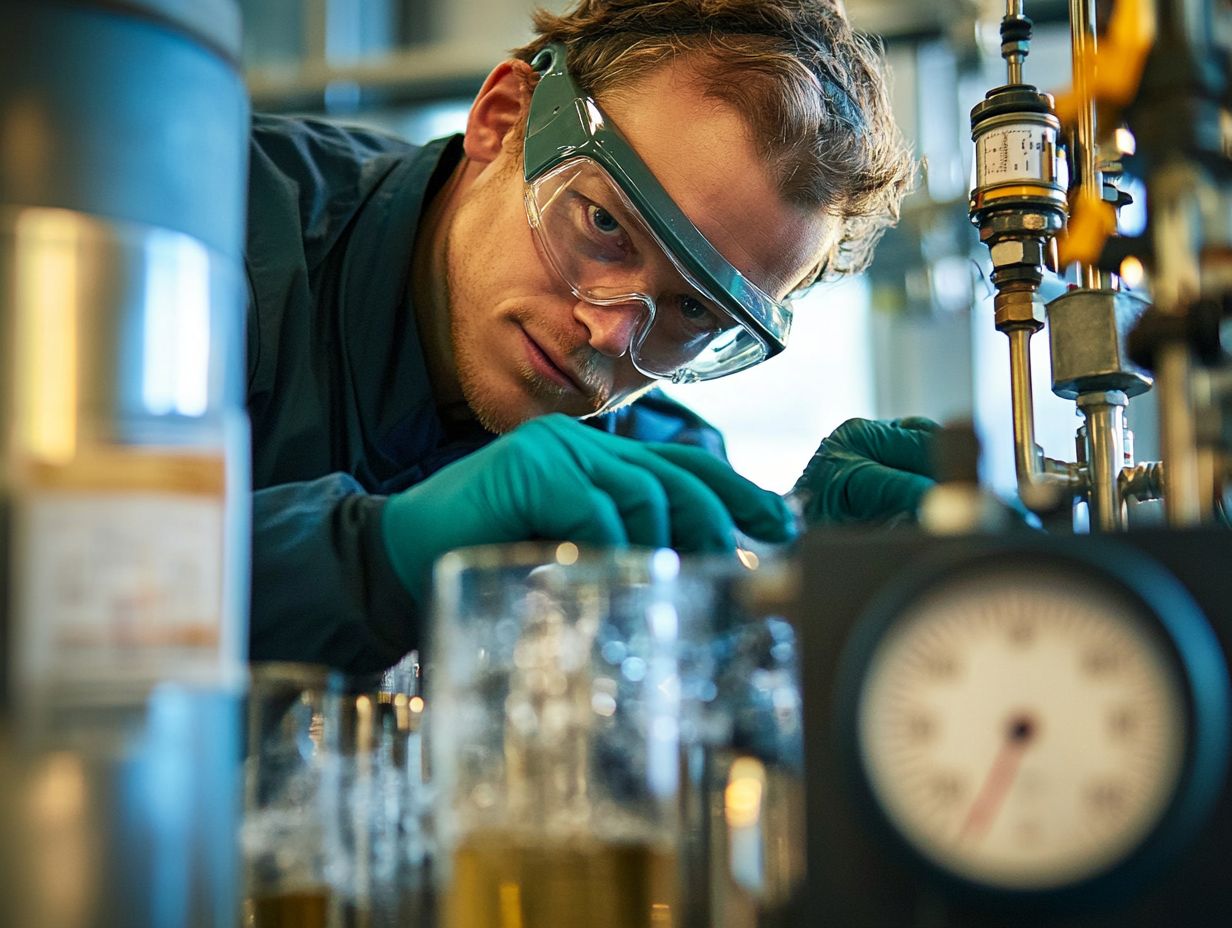
You may notice symptoms of high carbonation in beverages manifesting in various ways, with excessive foam or head formation being the most prominent upon pouring. This issue often strikes hard in carbonated drinks like soda and sparkling water, making it challenging to serve and fully enjoy your drink. In beer, improper carbonation can lead to a range of issues from flat beer to overly fizzy beer.
You might also detect off-flavors or a sour taste, which signals a notable shift from the intended flavor profile. This can occur due to improper carbonation levels during the brewing or bottling process, ultimately impacting your overall experience. Using proper brewing techniques can help mitigate these issues.
1. Excessive Foam or Head Formation
Excessive foam or head formation often signals high carbonation, leading to a bubbly overflow when you pour your beverage. This issue is particularly prevalent in kegged beers, where improper CO2 pressure settings or excessive carbonation levels can turn a simple pour into a foamy ordeal. By managing the carbonation level through appropriate keg lines and settings, you can rectify this problem, paving the way for a more enjoyable serving and drinking experience.
Using anti-foaming agents or adjusting the level of agitation during pouring can also help. The kegging process plays a vital role in foam stability, as the volume of CO2 dissolved in your beer can fluctuate based on the serving temperature and the style of beer. If the keg pressure is set too high, especially for lighter styles, you may find yourself grappling with an excessive amount of bubbles.
On the flip side, if the pressure is too low, your beverage might miss the mark on carbonation, resulting in a flat pour that lacks the character you crave. Using tools like a CO2 regulator can help maintain the desired carbonation level. Fine-tuning those CO2 pressure settings and mastering proper pouring techniques, like tilting the glass at an angle, can significantly reduce excessive foaming and elevate your overall drinking experience.
By grasping these dynamics, you ensure that your final product retains its desired qualities while minimizing waste. Ensure your equipment is sanitized to protect your brew! Using a kegerator with an integrated CO2 system can make this process easier.
2. Difficulty Pouring or Dispensing
Difficulty in pouring or dispensing beverages often signals excessive carbonation, leading to overflowing glasses and wasted product. This challenge frequently arises in kegerator setups, where improper CO2 levels can disrupt the balance, making it hard to serve drinks efficiently. Ensuring that your keg is set up correctly and adjusting the pressure as needed can alleviate these pouring issues, resulting in better beverage management.
Additionally, using carbon dioxide regulators and appropriate keg conditioning methods can help maintain the desired carbonation level. When carbonation levels exceed the ideal range, excessive foaming can occur, creating frustration for both bartenders and customers. To achieve optimum results, it s essential to balance temperature and pressure while considering the specific beer style and the surrounding environment.
With repeated adjustments and careful monitoring, you can significantly enhance the pouring experience, maximizing the flavor profile of each beverage or soda. Keeping your keg lines and regulators clean is crucial to preventing further complications and ensuring a seamless process. By paying close attention to these factors, you can elevate your service and dramatically reduce product loss.
3. Off-Flavors or Sour Taste
Off-flavors or a sour taste in your beverages may stem from elevated carbonation levels, often resulting from contamination or over-carbonation during fermentation. This unwelcome sourness can overshadow the intended flavor profile, leading to a less-than-enjoyable drinking experience. It s essential for you to identify and address the source of high carbonation, whether that involves selecting the right yeast or managing fermentation conditions, to maintain the beverage’s quality.
When carbonation levels creep above the desired range, you create a breeding ground for unwanted bacteria or wild yeasts, both of which can introduce those pesky off-flavors. Take, for instance, a type of bacteria that can cause sour flavors this bacteria thrives in overly carbonated environments and can inject a tangy or sour note that strays far from your beverage s original palate.
To ward off these risks, you should implement rigorous quality control measures throughout the brewing process. This includes regularly monitoring fermentation conditions and adhering to strict sanitation protocols. By prioritizing these practices, such as proper kegging and conditioning, you can ensure that every sip embodies your crafted intentions, free from any undesirable sour notes.
How to Prevent High Carbonation?
Act now to prevent excessive carbonation and safeguard the quality of your beverages! To prevent excessive carbonation in your beverages, it s essential to embrace a meticulous approach that combines effective sanitation practices, precise CO2 pressure settings, and the right yeast strains during fermentation.
By implementing thorough cleaning methods prior to brewing, you can safeguard against contamination from wild yeast or bacteria. Keep a close eye on CO2 pressure during the kegging or bottling process or use carbonation drops, along with selecting yeast strains tailored to achieve your desired carbonation level, to significantly enhance the overall quality of your beverages.
1. Proper Sanitation and Cleaning Practices
Proper sanitation and cleaning practices are essential for preventing high carbonation and upholding the integrity of the brewing process. In the realm of brewing, the importance of thorough sanitation cannot be overstated. By adopting effective methods such as hot water rinsing, utilizing food-safe detergents, and employing sanitizing solutions, you can effectively eliminate any residual contaminants.
Regularly monitoring your fermentation vessels, such as those used for New England IPA or other beer styles, is crucial to ensure that no unwanted organisms disrupt the process and cause excessive fermentation that could spoil a batch. By prioritizing cleanliness, you not only protect the flavor profile of your beer but also positively influence carbonation levels, achieving that perfect balance of effervescence.
By paying meticulous attention to detail, you not only preserve the intended aroma and taste but also create an unforgettable drinking experience!
2. Accurate CO2 Pressure Settings
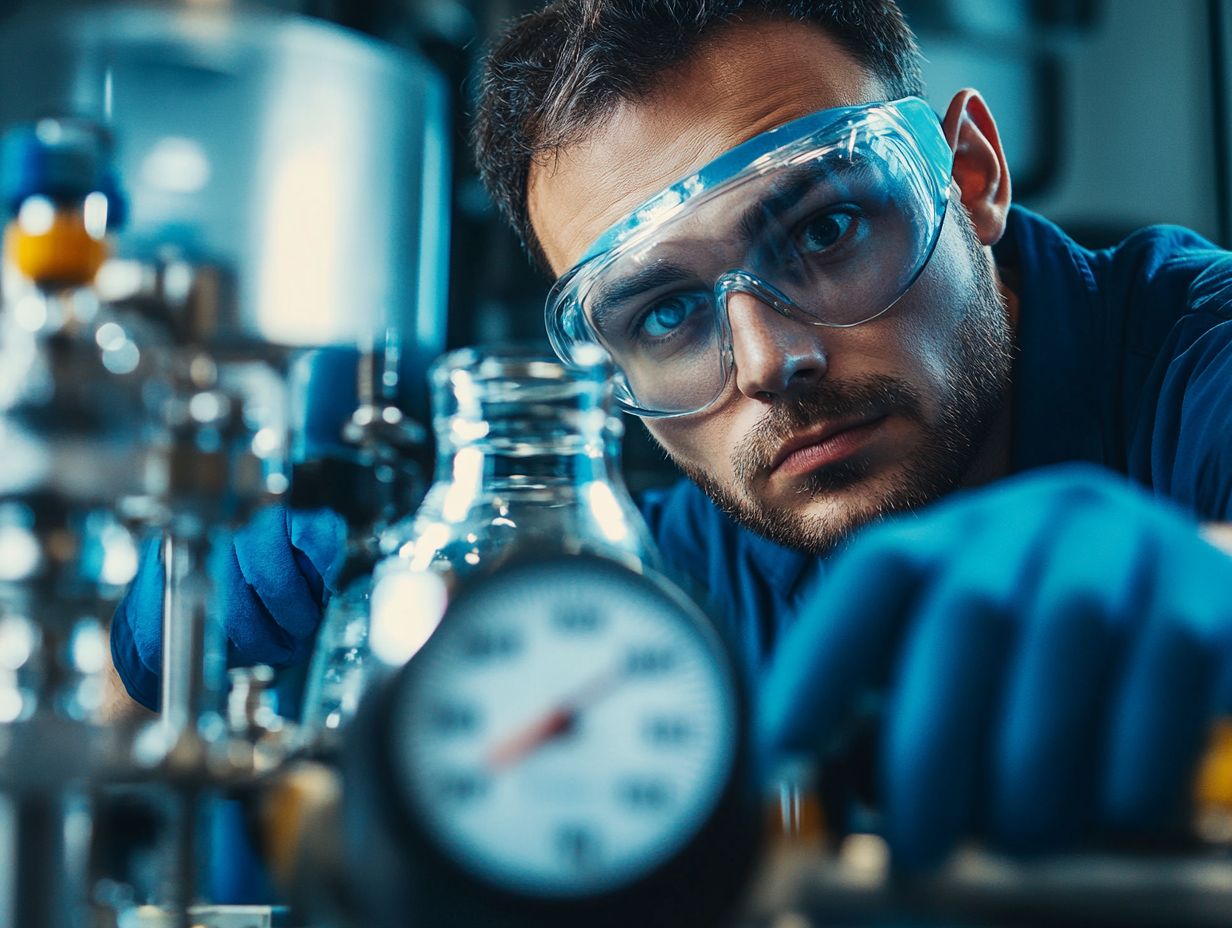
Accurate CO2 pressure settings are essential in your kegging process, as they prevent high carbonation levels in your beverages or soda. By adjusting the pressure according to the specific beverage style, you ensure that the carbonation remains optimal, avoiding those pesky issues of excessive foaming or overly fizzy drinks.
A precise keg setup not only allows for better beverage management but also elevates the overall drinking experience.
It preserves the intended flavor profile of your beverages and helps maintain their integrity over time. When you regulate CO2 pressure correctly, you significantly reduce the risk of over-carbonation, which can lead to an unpleasant mouthfeel and diminished aroma.
By tailoring your settings for different types of drinks whether they’re ales, lagers, or stouts you can achieve a balanced carbonation level that maximizes refreshment and appeal. This can also be applied to non-alcoholic beverages such as sparkling water and pop.
Don t overlook these details they can make or break your beverage s quality! Paying attention to them not only contributes to a more consistent product but also showcases your craftsmanship as a brewer, ensuring that every pour delivers the best possible taste and enjoyment.
3. Use of Appropriate Yeast Strains
Using the right yeast strains during the brewing process can profoundly impact carbonation levels. This helps you maintain control over the final product’s fizziness. Different yeast strains generate varying amounts of carbon dioxide during fermentation, which makes it crucial for you to select strains that match the desired carbonation level for the specific beer styles you aim to create.
By understanding the fermentation characteristics of your chosen yeast, you can achieve a harmonious balance of flavor and carbonation.
Every yeast strain boasts its own unique fermentation profile, influencing not just the CO2 production but also the overall taste and mouthfeel of your beer. For example, some strains are celebrated for imparting a crisp finish in lagers, while others may introduce fruity esters and added complexity in ales.
By mastering the intricate relationship between yeast selection and carbonation, you can cater to diverse consumer preferences, ultimately enhancing the drinking experience. Making informed choices about yeast strains, whether for traditional brewing or using a SodaStream, will ensure consistency and quality in your final product, elevating your brewing craft to new heights.
How to Fix High Carbonation or Over-carbonation?
To address high carbonation in your beverages, you can utilize several effective methods. These include:
- Bleeding off excess CO2 from kegs or bottles
- Adjusting pressure settings
- Using anti-foaming agents, which help to reduce bubbles and foam in your drinks
By implementing these strategies, you gain better control over carbonation levels, ensuring that your final product aligns with both quality standards and consumer preferences.
Mastering the proper techniques to tackle carbonation issues is essential for preserving the integrity and enjoyment of your beverage.
1. Bleed Off Excess CO2 from Keg or Bottle
Bleeding off excess CO2 from a keg or bottle is an effective way to manage high carbonation levels in your beverages. By carefully releasing pressure, you allow some of the carbon dioxide to escape, which reduces carbonation and minimizes excessive foaming when pouring. When executed with precision, this technique preserves the quality of your drink, enhancing your overall enjoyment.
Mastering this technique is essential for any beverage enthusiast or professional. If you attempt to bleed off CO2 too quickly or without close attention, you risk unbalancing the taste and losing carbonation, ultimately compromising the beer s character and potentially leading to flat beer.
It s advisable to gradually release CO2 in controlled bursts while keeping an eye on the pressure gauge to prevent drastic fluctuations. This approach not only maintains the intended flavor profile and mouthfeel but also ensures an ideal pour with minimal foam. Pairing this method with sound keg management practices will keep your beverage fresh and satisfying, elevating your experience to new heights.
Adjust CO2 Pressure and Temperature
Adjusting CO2 pressure and temperature is essential for addressing high carbonation levels. These factors play a crucial role in determining the gas’s solubility in beverages. Lowering the CO2 pressure or temperature stabilizes carbonation levels, resulting in a more balanced and enjoyable drink.
Proper keg setup and temperature control are fundamental to achieving the perfect carbonation level for any beverage. Grasping how to fine-tune these variables can significantly enhance your beverage management and overall quality.
As a beverage professional, consider experimenting with various pressure settings, typically between 10 to 14 psi. Keep a close eye on the temperature, ideally between 38 F and 45 F.
Striking this balance elevates the taste and influences mouthfeel and aroma, crafting an exceptional drinking experience. Regularly checking these parameters helps prevent over-carbonation and reduces waste, ultimately benefiting both you and your customers.
Using a kegerator for draft beverages helps in precise temperature control.
Use of Anti-foaming Agents
The use of anti-foaming agents offers a practical solution for addressing high carbonation levels. These agents effectively minimize excessive foaming during pouring by reducing the surface tension of bubbles. This allows for a smoother pour and a more controlled release of carbonation.
While effective, it s essential to carefully consider their impact on the overall quality of the beverage. This ensures that the intended taste profile remains intact, particularly for various beverage styles, including soda and beer.
Integrating these agents not only helps manage carbonation but also plays a critical role in preserving the sensory attributes and overall taste of the beverage. By balancing carbonation levels, anti-foaming agents enhance your drinking experience, ensuring that flavors shine through without the distraction of unwanted foam.
Their mechanism of action can also elevate the visual appeal and carbonation level, making the beverage look even more inviting. As a manufacturer, you can leverage these agents to maintain consistency across batches of beverages and sodas, crucial for consumer satisfaction.
Ultimately, utilizing anti-foaming agents allows you to create a refined beverage that meets both quality and taste expectations, ensuring each sip is as delightful as the last.
Frequently Asked Questions
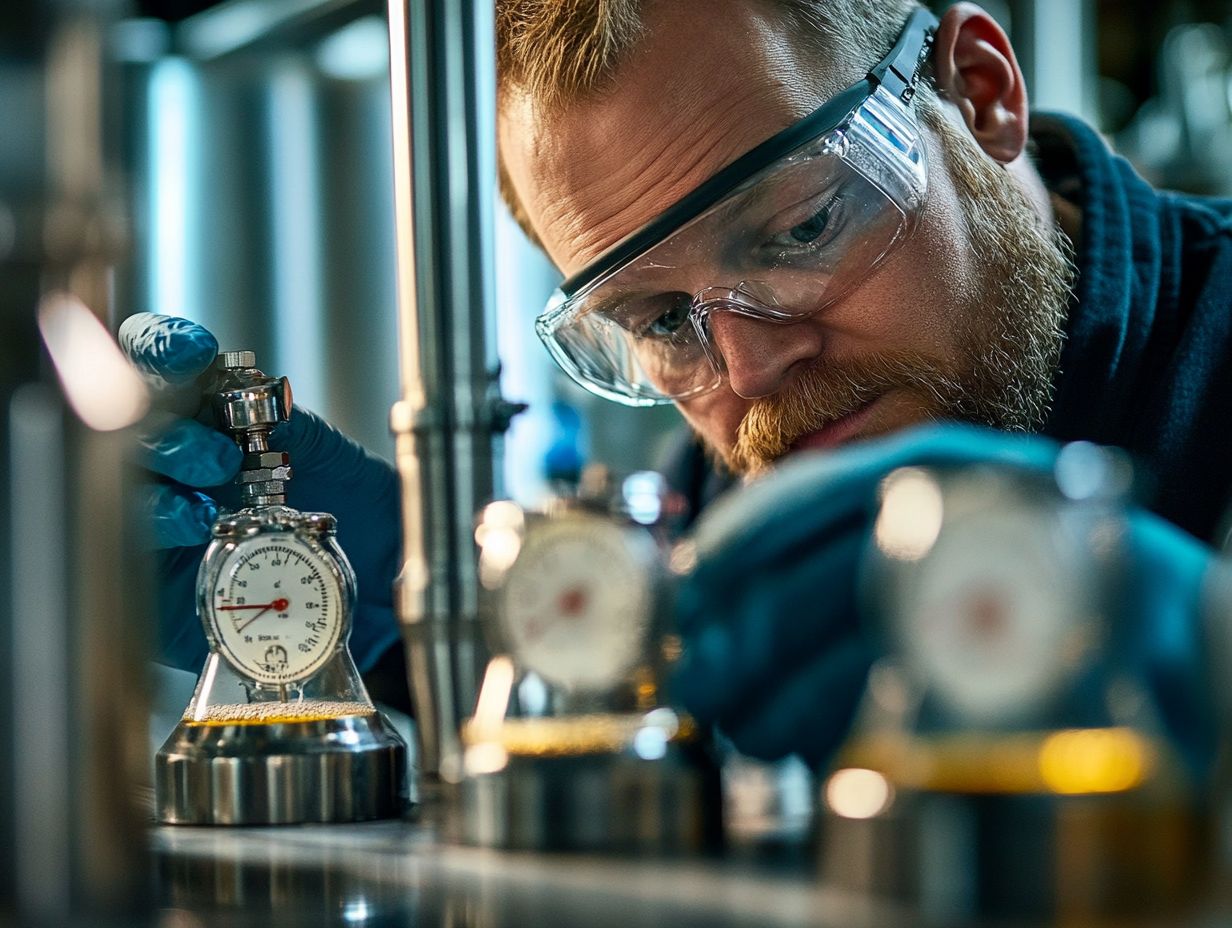
What causes high carbonation problems in drinks?
High carbonation problems in drinks are usually caused by excess carbon dioxide (CO2) gas being added during the carbonation process. This can be due to a malfunctioning carbonation system, incorrect settings, or human error. Agitation during bottling or kegging can also contribute to this issue.
How can I tell if my drink has high carbonation?
You can tell if a drink has high carbonation by observing the level of bubbles in the liquid. Excessive bubbles forming or a foamy texture are signs of high carbonation. Additionally, the pressure in the container may feel higher than normal when opened, and the drink may taste more spritz-like.
What are the effects of high carbonation on drinks?
High carbonation can result in a harsh, tingling sensation on the tongue, making the drink less enjoyable to consume. Excessive foaming can make pouring challenging, leading to spillage. In extreme cases, high carbonation can even cause the drink to explode when opened. For beers, especially, it can turn a good brew flat if not managed properly.
How can I adjust the carbonation levels in my drink?
To adjust carbonation levels in a drink, use a carbonation calculator or adjust the settings on your carbonation system. Don t risk your drink s quality stick to the recommended levels for your specific drink to avoid high carbonation problems. For brewers, conditioning methods like using priming sugar or carbonation drops are crucial.
How do I fix high carbonation problems in my drinks?
If you have high carbonation in your drinks, try releasing excess carbon dioxide. You can do this by gently shaking the container or pouring the drink into a larger vessel.
Adjust your carbonation system settings as needed. If problems persist, consult a professional for help. Brewers often use kegging as a method to manage carbonation more effectively.
How can I prevent high carbonation problems in the future?
To avoid future carbonation issues, maintain and calibrate your carbonation system regularly. Follow the manufacturer’s instructions and recommended carbonation levels closely.
Regularly check your CO2 tank and keg lines if you have a kegerator setup. This simple step can prevent many carbonation-related problems.

